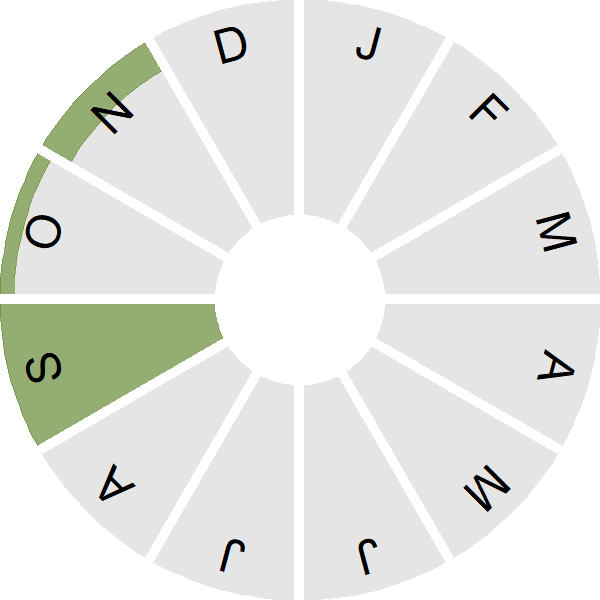Eastern Olivaceous Warbler
Introduction
Recently separated as a species from the western form, Eastern Olivaceous Warbler is an extremely rare visitor to Britain & Ireland.
The breeding range extends from northern China west to Croatia, with other populations in central and north-west of Africa.
Key Stats
Status and Trends
Conservation Status
Population Size
Population Change
Population trends of this scarce species are not routinely monitored.
Distribution
This species is a rare vagrant and was recorded during Bird Atlas 2007–11 as shown on the map.
or view it on Bird Atlas Mapstore.
European Distribution Map
Distribution Change
This vagrant is too rarely reported to map distribution change.
Seasonality
Eastern Olivaceous Warbler is a very rare autumn vagrant.
Weekly pattern of occurrence
The graph shows when the species is present in the UK, with taller bars indicating a higher likelihood of encountering the species in appropriate regions and habitats.

Movement
Britain & Ireland movement
European movements
EuroBirdPortal uses birdwatcher's records, such as those logged in BirdTrack to map the flows of birds as they arrive and depart Europe. See maps for this species here.
The Eurasian-African Migration Atlas shows movements of individual birds ringed or recovered in Europe. See maps for this species here.
Biology
Survival and Longevity
Survival is shown as the proportion of birds surviving from one year to the next and is derived from bird ringing data. It can also be used to estimate how long birds typically live.
Classification, names and codes
Classification and Codes
- Order: Passeriformes
- Family: Acrocephalidae
- Scientific name: Iduna pallida
- Authority: Hemprich & Ehrenberg, 1833
- BTO 5-letter code: OLIWA
- Euring code number: 12550
Alternate species names
- Catalan: busqueta pàl·lida
- Czech: sedmihlásek šedý
- Danish: Bleg Gulbug
- Dutch: Oostelijke Vale Spotvogel
- Estonian: leet-käosulane
- Finnish: vaaleakultarinta
- French: Hypolaïs pâle
- German: Blassspötter
- Hungarian: halvány geze
- Icelandic: Fölsöngvari
- Irish: Ceolaire Bánlíoch
- Italian: Canapino pallido orientale
- Latvian: blavais kaukis
- Lithuanian: blyškioji tošinuke
- Norwegian: Bleksanger
- Polish: zaganiacz blady
- Portuguese: felosa-pálida
- Slovak: sedmohlások bledý
- Slovenian: bledi vrtnik
- Spanish: Zarcero pálido
- Swedish: eksångare
- Welsh: Telor Llywd

